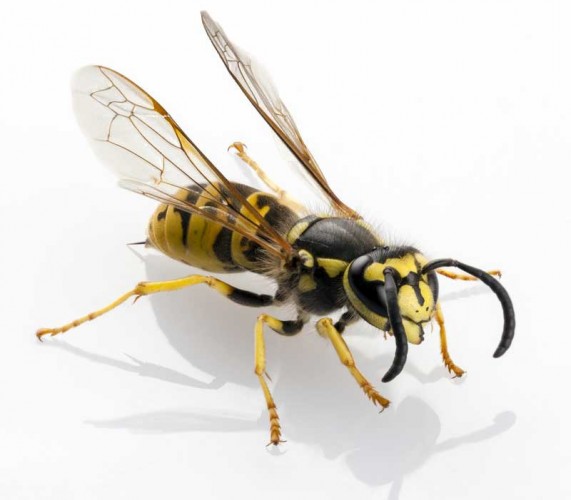Which Insects Cause Allergic Reactions?

There are a range of stinging insects possessing venom capable of causing an allergic reaction in humans. These are members of the Hymenoptera family which include bees wasps and ants.
Although the vast majority of people will only experience an unpleasantly painful sting from these insects, for around one percent of the population such a sting could be life-threatening. They may experience an extreme allergic reaction known as anaphylaxis which is responsible for around 50 deaths a year in the U.S. alone.
As the body’s extreme reaction to the insect venom is not rational the actual danger posed from each species is broadly similar, and not related to how painful the sting is. With this in mind it is the most common and most aggressive insects that should be considered most dangerous.
Below are some of the groups of insects that can provoke a severe allergic reaction.
Wasps & hornets
The vespids are a group of insects that include paper wasps, yellow jackets, hornets and other wasp species. More people are actually allergic to wasp stings than bee stings, which is unfortunate as wasps are generally more aggressive than bees.
Yellow jackets (or common wasps) and paper wasps are probably the biggest nuisance. They regularly build their nests within buildings and are the bane of anyone trying to have a picnic in late summer. These wasp species will actively defend their nests which frequently brings them into conflict with humans. In addition, unlike bees, wasps do not die when they sting and will attack repeatedly.
Whilst hornets are far more intimidating and capable of delivering an equally nasty sting they are usually less aggressive. As their nests tend to be high in trees there is also a decreased likelihood of stinging.
Bees
Bees are largely non-aggressive and, like wasps, it is only the females which possess a sting. Unlike wasps, most bees have a barbed sting which remains in the skin afterwards, also killing the bee in the process.
As the most common species honey bees are most likely to sting, they are also more likely to cause an allergic reaction. Other species such as the bumble bee and sweat bees are less likely to cause an adverse reaction (or sting).
The one exception to these passive natured bees are the Africanized honey bees, or ‘killer bees’ to give them their stage name. Now found in parts of the Southwestern U.S these hybrid bees are more aggressive and have been known to attack in swarms even without provocation.
Ants
In America it is the fire ant, and to a lesser extent harvester ants, which present the biggest danger. Both these ants can deliver a painful sting with the harvester ant reputedly having the most powerful venom of any insect. The red imported fire ant was originally native to Brazil but is now found through much of Southeastern U.S.
Fire ants will attack en masse if their nest is disturbed. This inevitably results in multiple stings. Not only will many ants be involved but each ant will cling on with its jaws whilst stinging repeatedly. The result is painful and itchy for most but can bring on a severe allergic reaction in others.
Fire ants have also found their way to Australia but here the most common cause of anaphylaxis from ant stings is the Australian Jack Jumper ant. These are found all along the east coast along with green ants in Queensland, which may also cause allergic reactions.